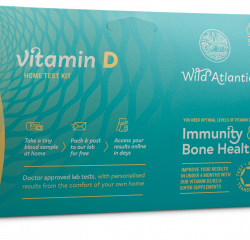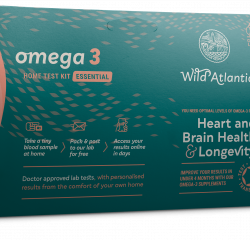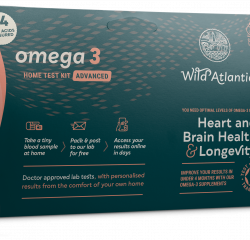This article examines the duration Vitamin D remains in the human body, considering factors such as sun exposure, diet, and body fat percentage. It explores the importance of optimal Vitamin D levels, potential symptoms of deficiency, and the role of sunlight.
The potential for overconsumption, associated risks, and methods for addressing deficiency are also discussed.
The article aims to provide an in-depth understanding of Vitamin D’s role within the human body.
Key Takeaways
- Vitamin D has a half-life of about two to three weeks in the body, meaning it takes approximately two to three weeks for half of the vitamin D to be cleared from your system.
- It can take several months for all the vitamin D to be eliminated from the body.
- Maintaining optimal vitamin D levels is important for bone health, immune system support, mood and mental health, and chronic disease prevention.
- Strategies to maintain optimal vitamin D levels include moderate sun exposure, consuming foods rich in vitamin D, considering vitamin D supplements, and getting regular testing to monitor your levels.
Importance of Maintaining Optimal Vitamin D Levels
Maintaining optimal vitamin D levels is paramount due to its critical role in promoting bone health, supporting the immune system, impacting mood and mental health, and potentially preventing chronic diseases.
Adequate levels of this nutrient assist in calcium absorption, which is essential for robust bones and teeth. Additionally, vitamin D strengthens the immune response, thus reducing susceptibility to illnesses.
Research suggests a correlation between sufficient vitamin D and enhanced mood, potentially mitigating mental health disorders. Moreover, optimal vitamin D levels may lower the risk of chronic diseases such as heart disease and diabetes.
Therefore, it is imperative to ensure consistent levels of vitamin D in the body, influenced by factors such as sun exposure, diet, and body fat percentage.
Duration: How Long Does Vitamin D Stay in Your System
The duration for which this essential nutrient remains in the system is influenced by several factors. Sun exposure stimulates the skin to produce vitamin D, while dietary factors can either supplement or limit the amount available for absorption. As a fat-soluble vitamin, a higher body fat percentage can facilitate longer durations of vitamin D storage.
On average, the half-life of vitamin D is about two to three weeks, indicating that half the amount of this nutrient is typically eliminated from the body in this time frame. However, complete elimination can take several months. This time frame may vary significantly among individuals due to the abovementioned factors.
Identifying Symptoms: Do I Have a Vitamin D Deficiency
Identifying symptoms of a potential deficiency in this essential nutrient may require observing certain signs, such as fatigue, muscle weakness, and bone pain. These signs often indicate a body’s struggle to perform normal functions due to insufficient vitamin D levels. Other symptoms may include decreased bone density, leading to conditions such as osteoporosis, and an impaired immune system, making individuals more susceptible to infections.
- Fatigue and Muscle Weakness: Chronic fatigue and constant muscle weakness could indicate a vitamin D deficiency.
- Bone Pain and Fragility: Regular bone pain and fractures might suggest a lack in the ‘sunshine vitamin’.
- Frequent Illness: An increased susceptibility to infections could be an underlying sign of low vitamin D levels. Regular blood tests are advised to confirm these symptoms.
Sunlight’s Role: Can It Fulfil My Vitamin D Requirements Alone
Exposure to sunlight significantly contributes to the production of a crucial nutrient in the body, often called the ‘sunshine vitamin’. The sun’s ultraviolet B (UVB) rays interact with the cholesterol in the skin cells, synthesising vitamin D.
However, geographic location, season, time of day, and skin type profoundly influence this production. For instance, regions further from the equator receive less UVB radiation, especially during winter months, limiting vitamin D synthesis. Moreover, dark skin types, which contain more melanin, reduce the skin’s ability to produce vitamin D.
Therefore, while sunlight is a natural source of vitamin D, more is needed to sufficiently fulfill the vitamin D requirements alone, necessitating dietary intake or supplementation.
Safety Measures: The Possibility of Vitamin D Overconsumption
Safety measures must be considered to avoid overconsumption of this fat-soluble nutrient, as it can lead to potential health risks. While Vitamin D is essential for numerous physiological functions, an excessive intake may result in toxicity. Notably, this risk is not from dietary or sun exposure, but primarily from high doses of supplements.
- Hypercalcemia: High levels of Vitamin D can cause an abnormal increase in blood calcium levels, leading to nausea, vomiting, and in severe cases, kidney damage.
- Calcification of tissues: Overconsumption can lead to calcium deposits in soft tissues like heart and lungs, causing pain and organ damage.
- Cognitive issues: High vitamin D levels may lead to confusion, disorientation, and problems with concentration.
Therefore, adhering to recommended dosages and consulting healthcare professionals before supplementation is vital.
Recovery: Addressing and Reversing Vitamin D Deficiency
Recovery from vitamin D deficiency involves a comprehensive approach that includes appropriate supplementation, dietary modifications, and lifestyle changes.
Supplementation, under the guidance of a healthcare professional, is often the first step. This is typically followed by dietary modifications which incorporate foods rich in vitamin D, such as fatty fish, fortified dairy products, egg yolks, and mushrooms.
Lifestyle changes include increasing sun exposure, ideally for 10-30 minutes between 10 am and 3 pm. It is important to note that these interventions should be tailored to individual needs, based on factors such as age, overall health, and the severity of the deficiency.
Regular testing is essential to monitor progress and adjust the approach as needed. Over time, this comprehensive approach can effectively reverse vitamin D deficiency.
Are there any risks associated with vitamin D supplementation?
Transitioning from strategies to address and reverse Vitamin D deficiency, the focus shifts to the potential risks associated with Vitamin D supplementation. It is vital to note that while supplementation can be beneficial, there are certain associated risks.
- Hypercalcemia: Excessive intake of Vitamin D supplements can lead to hypercalcemia, a condition characterized by abnormally high levels of calcium in the blood, which can lead to kidney stones and heart complications.
- Toxicity: Vitamin D toxicity, though rare, can result from prolonged overconsumption, leading to nausea, vomiting, and muscle weakness.
- Interactions with medications: Vitamin D supplements could potentially interact with certain medications, altering their effectiveness.
Therefore, it is advisable to consult a healthcare professional before starting any Vitamin D supplementation regimen.
Frequently Asked Questions
What Are Some Common Medical Conditions That Can Lead to Vitamin D Deficiency?
Common medical conditions leading to vitamin D deficiency include chronic kidney disease, Crohn’s disease, and cystic fibrosis. These conditions impede the body’s ability to convert or absorb vitamin D, resulting in deficiency.
Can Certain Medications Affect the Absorption or Effectiveness of Vitamin D in the Body?
Certain medications can indeed impact the absorption and effectiveness of Vitamin D. These include steroids, weight-loss drugs, cholesterol-lowering drugs, and some seizure medications, all potentially reducing the body’s ability to absorb Vitamin D effectively.
How Does Age Impact the Body’s Ability to Produce and Absorb Vitamin D?
Age significantly impacts the body’s ability to produce and absorb Vitamin D, with production and absorption rates decreasing as one ages due to reduced skin thickness and changes in gastrointestinal tract function.
Are There Specific Populations or Groups That Are More Prone to Vitamin D Deficiency?
Certain populations, including the elderly, individuals with darker skin, those with limited sun exposure, and those with specific dietary restrictions, are more susceptible to vitamin D deficiency due to various physiological and lifestyle factors.
How Does Vitamin D Interact With Other Vitamins and Minerals in the Body?
Vitamin D facilitates the absorption of calcium and phosphorus, essential minerals for bone health. It interacts synergistically with vitamin K, promoting bone mineralization while inhibiting arterial calcification, and contributing to cardiovascular health.
Conclusion
In conclusion, Vitamin D is crucial for bone health, immune support, mental wellness, and disease prevention. Its presence in the body relies on sun exposure, diet, and body fat percentage.
Identifying deficiency symptoms promptly and taking necessary steps, including sun exposure, dietary adjustments, and supplements, is essential. However, one must be aware of the potential risks of overconsumption.
Regular testing can help maintain optimal Vitamin D levels and ensure overall health.





























